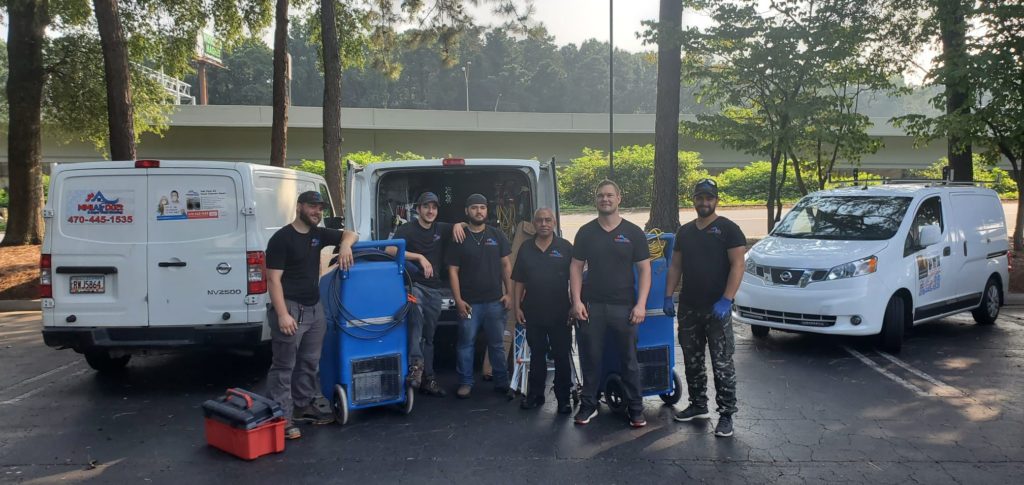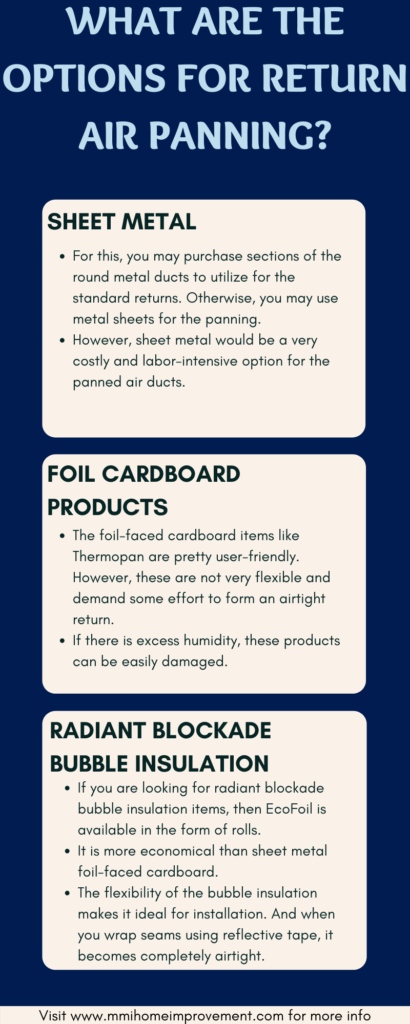As a homeowner, you should have good knowledge about the various aspects of the HVAC system. While you have heard about ductwork, air filters, blower motor, evaporator coil, and thermostat, you might have also come across the term joist panning. And you would wonder, what is joist panning? So, here you will find a detailed insight into the HVAC beam panning.
You can install the beam panning between the wall studs to cover the stud opening that forms the duct run. You can also nail it at the end of the floor joist to transform the floor joist opening into a duct run. At the same time, the female end enables you to interlock many pieces for extended runs. Manufactured of galvanized steel, it is highly durable and rust-proof.
What are the Features?
- You can form a run of rectangular duct among the studs
- The female end allows you to interlock several pieces for lengthy runs
- Galvanized steel is the core component so it is highly strong and rust-proof
- You will not find any sheet metal screws
- Also, you can trim it to any size to fit it for various applications
- You can nail or screw it to a wooden surface
- The standard gauge is 30

Which Installation Method is the Best for Cold Air Returns?
Once you have decided to save your money and install your HVAC ductwork yourself instead of hiring an Air Duct Repair and Replacement in Canton, you should prefer the joist panning technique for the cold air returns. It would be best to relax as the return air duct panning is relatively straightforward as it employs the area between the floor joists. Also, it demands significantly less material that runs metal ducts.
What are the Options for Return Air Panning?
Some of the primary methods for the return air ducts are as follows:
Sheet Metal
For this, you may purchase sections of the round metal ducts to utilize for the standard returns. Otherwise, you may use metal sheets for the panning. However, sheet metal would be a very costly and labor-intensive option for the panned air ducts.
Foil Cardboard Products
The foil-faced cardboard items like Thermopan are pretty user-friendly. However, these are not very flexible and demand some effort to form an airtight return. If there is excess humidity, these products can be easily damaged.
Radiant Blockade Bubble Insulation
If you are looking for radiant blockade bubble insulation items, then EcoFoil is available in the form of rolls. You can adjust to fit it between or beneath the floor joists. However, it is a brilliant solution as it is more economical than sheet metal foil-faced cardboard. Also, the flexibility of the bubble insulation makes it ideal for installation. And when you wrap seams using reflective tape, it becomes completely airtight.
How to Install?
You will be delighted to know that installing return air duct panning is extremely simple. You need to set up the material you choose for the bottom of the floor joists and then cover the closures. However, if you use Thermopan or Ecofoil, you need to staple it precisely to the beams. Besides, you can easily manipulate these products and would require a utility knife along with a stapler.

Use the below code to Embed this info-graphic
Why Should You Use EcoFoil?
Ecofoil bubble insulations in sliced widths make it ideal to be mounted between the floor beams. In Contrast to other items like Thermopane, the EcoFoil radiant blockade items are approved by the NFPA 286 full burn room test.
Therefore, when you fix Ecofoil in your joist panning, you can enjoy its waterproof and mould-resistant properties. Also, if your heating and cooling ductworks are positioned in the attic or wish to improve your HVAC system’s efficiency, you should prefer EcoFoil Duct Insulation.
Considering the installation method, you opt for; you can get up to R-4 of insulation. Hence, all the EcoFoil Double Bubble items reflect almost 97% of radiant heat to its origin. Hence, it is a brilliant option for open-ended spaces like attics and crawl spaces.
What is the Risk?
You must know that panned bays usually leak. In a few scenarios, the leakages may be due to the infusion of wiring, tubing, or roof strapping. For others, it may be due to inappropriate air-sealing at connections among the bay and the ducts or among the beams and the metal sheet pan.
As the air pressure in the return ducts is less than the rest of the indoor space, the ambient air is strained into the system via any cracks or openings. A majority of the panned-bay returns are positioned in the basement roof. And if the basement is mould-ridden or stinky, then the air drawn into the outlets can be a source of mold spores and musty smells. Hence, the contaminated air is circulated throughout the indoor space. Therefore, your may be susceptible to allergies, asthma, and other related health problems.

When you suck unwanted air from the basement into the return vents, it may cause system disparities. Hence, it can force the upper floors and pressure the house air into the wall cavities. However, in winters, the air moisture condenses in the cold cavities, encouraging mould growth.
Another issue is the position of the panned returns. If you fix these ducts in a cooler region (like an attic), the inside temperature of the ducts drops to the dew point. And in some parts of the state, the dew points can be as high as 70°F in the hot season. So, when it happens, the air humidity condenses on the internal duct metal surface, encouraging mould growth in the accumulated filth.
So, if your system has moldy or filthy dust, you would periodically require the help of an Air Duct Cleaning in Canton. However, it would be impossible to completely clean and sanitize the pipes, tubes, wires, and cross-bracing.
Conclusion
So, if you choose to install a return-air duct in your underground room joist bay, you can surface the bay using a duct board or a closed-cell foam. These items do not have a fibrous surface that can trap dust or mould spores.
